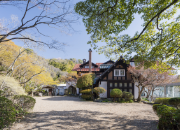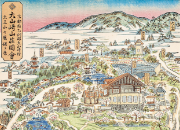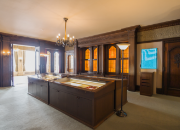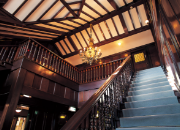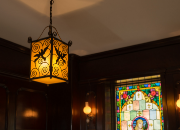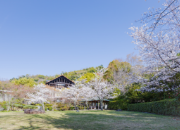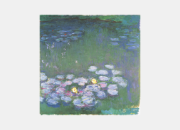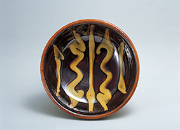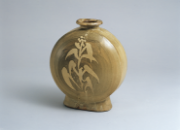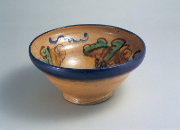Design
Main Building 1F
Entrance hall
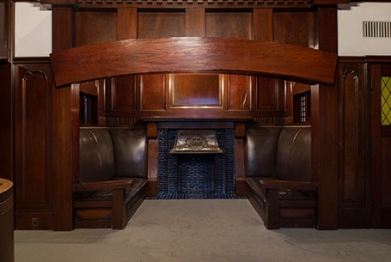
Entrance Hall Fireplace
A beautiful pine tree beam forms a high arch in the upper part of the entrance hall, in addition to a fireplace and custom-made sofa.
Yamamoto Memorial Gallery
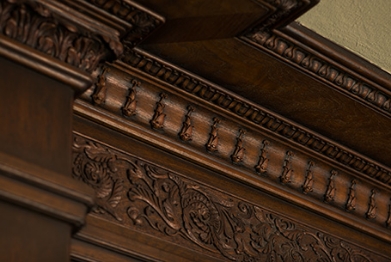
Design of the wall
Motifs of bamboo shoot (takenoko), a specialty of Otokuni region, including Oyamazaki are engraved on the fireplace and ceiling. The design of the bamboo shoot differs from the fireplace to the ceiling.
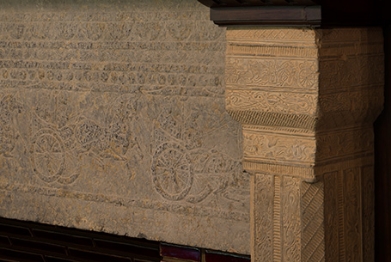
Gazoseki and Gasousen
Gazoseki (stone bas-relief) used to decorate a grave in the later Han Dynasty is mounted into the upper part of the fireplace and gasousen(ceramic bas-relief) is placed on the side of the fireplace respectively. These valuable items of heritage shows Shotaro Kaga’s wide range of tastes.
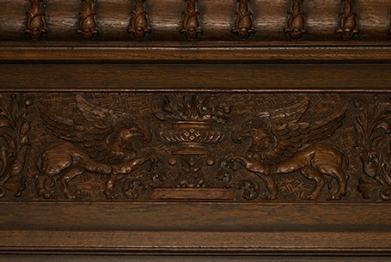
Kaga Family Crest
In the center of the bas-relief placed on the wall near the ceiling is the Kaga family crest, the Yotsumebishi (four lozenges).
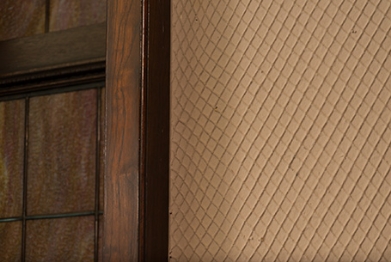
Design of the wall
On the wall an actual fishing net is implanted. It is said that Shotaro Kaga regarded this room as a ship.
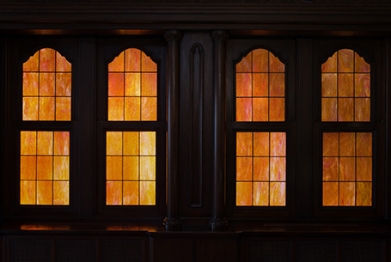
Stained Glass
Imported from Europe, gold is kneaded into the stained glass. It reveals different colors when viewed from inside and outside the room.
Gallery 1
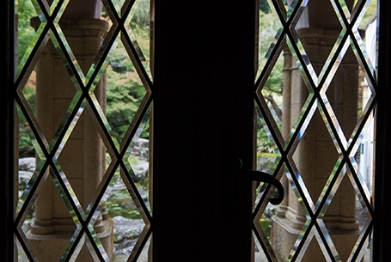
Cut Glass
Cut glass is used for the windows. On sunny afternoons, a rainbow light shines onto the floor through the glass.
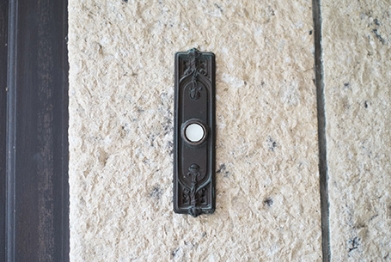
Intercom Bell
The white buttons arranged all around the main building, including on the terrace, were used by Shotaro Kaga to call servants.
Main Building Stairs
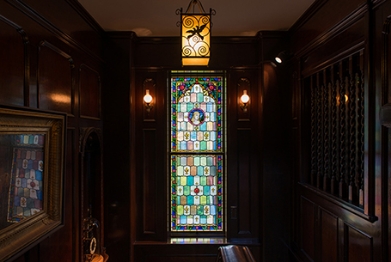
Stained Glass
Imported from Europe, the stained glass is presumed to have been placed at the current location even at the design stage. A mirror has been placed by the stairway wall to make the space seem larger.
Main Building 2F
Gallery 3
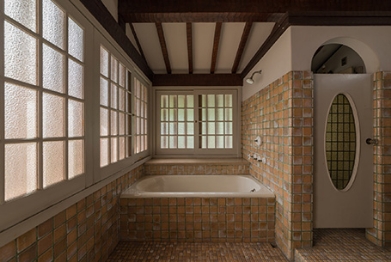
Bathroom
There is a bathroom in the back of the guest room used during Shotaro Kaga’s time. Equipped with a bathtub, shower, washstand, and toilet, it was a luxury facility and state of the art at the time. (There is no running water today.)
Terrace
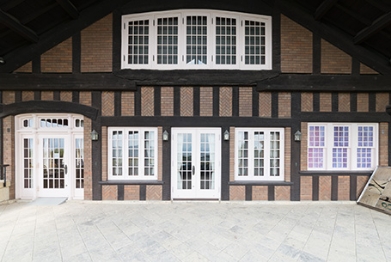
Terrace
When Kaga visited Europe, he saw Tudor Revival architecture in England, which was popular at that time, as well as homes built in the Swiss chalet style. The café’s terrace employs half-timbering, a distinctive character of Tudor Revival architecture where the wooden frame is exposed, and also chalet architectural touches.
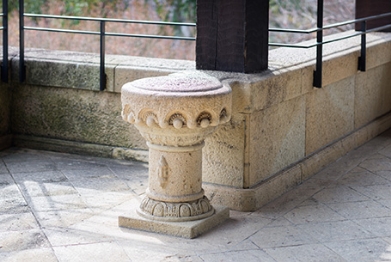
Terrace of the design
Tatsuyama stone produced near Kakogawa in Hyogo Prefecture is used as the finishing material for the terrace. The decorative design of the plinth is also distinctive.
Underground Jewelry Box annex (South Wing)
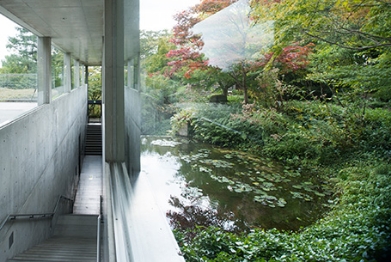
Water-lily pond
There is a small water lily pond by the stairs leading to the Underground Jewelry Box annex. Water streaming from the pond eventually becomes a waterfall, flowing into a bigger pond in the garden located in further down the slope.
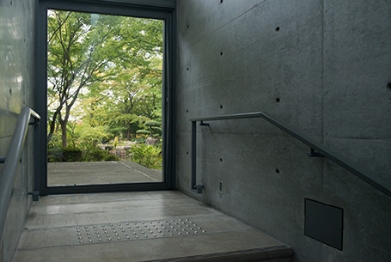
Window
Leaving the main building and descending the stairs leading to the Underground Jewelry Box annex, there is a window at the end of the passage. As the building is situated on sloping land, the pond outside the window is viewable at the same level.
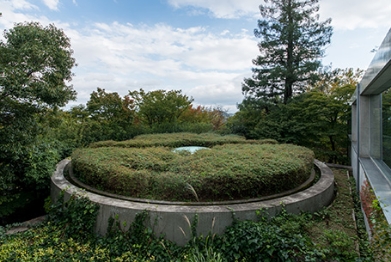
Rooftop
Greenery is planted on the roof.
Dream Box annex (North Wing)
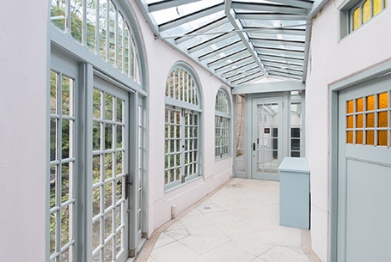
Corridor
Shotaro Kaga’s lifelong hobby was cultivating orchids and as such there were a number of greenhouses at the former villa. The glass passage formerly led to an orchid greenhouse.
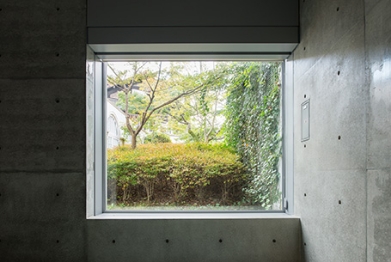
Window
A window by the gallery entrance offers a new perspective looking out from Mt. Tennozan towards the main building. (The window may be closed for an exhibition.)

